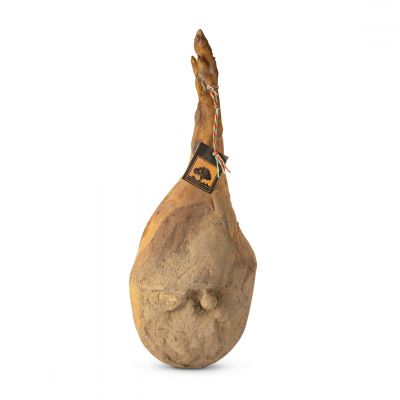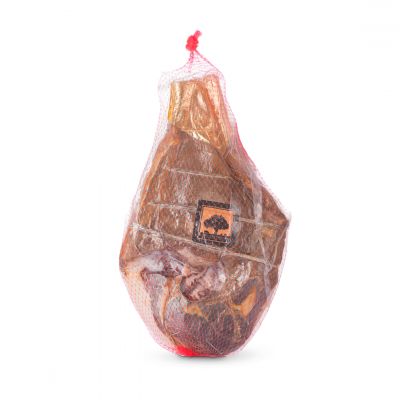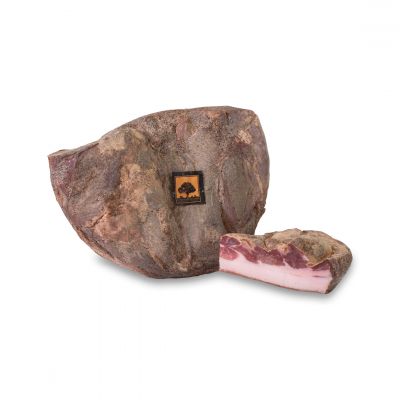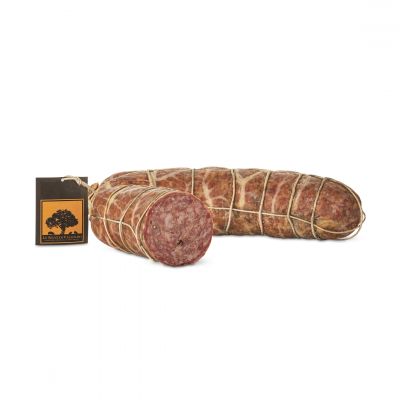A WALK AMONG THE OAKS AND CHESTNUTS OF THE CASENTINO FORESTS NATIONAL PARK, IN THE PROVINCE OF AREZZO, WHERE THE ORLANDI FAMILY RAISES GRIGIO DEL CASENTINO PIGS IN A SEMI-WILD-RANGE ENVIRONMENT.
TRAVELLING TO CASENTINO
"Here there is for sure a gost": this is the comment of Beatrice, our photographer, as soon as we reach the medieval hamlet of Poppi: full moon night, restless numbs, whirling leaves on the rise between the ancient walls... the mood seems to be the right one indeed. Beatrice doesn't give up and we discover - googling - that in effect the Castle of Conti Guidi is considered one of the most beautiful of Tuscany, but it is also well known for the gost of Contessa Matelda. Matelda was a fascinating noblewoman from Casentino who had her lovers killed to avoid being discovered by her husband, and was finally walled up alive in the Devil's Tower by the women of the village.
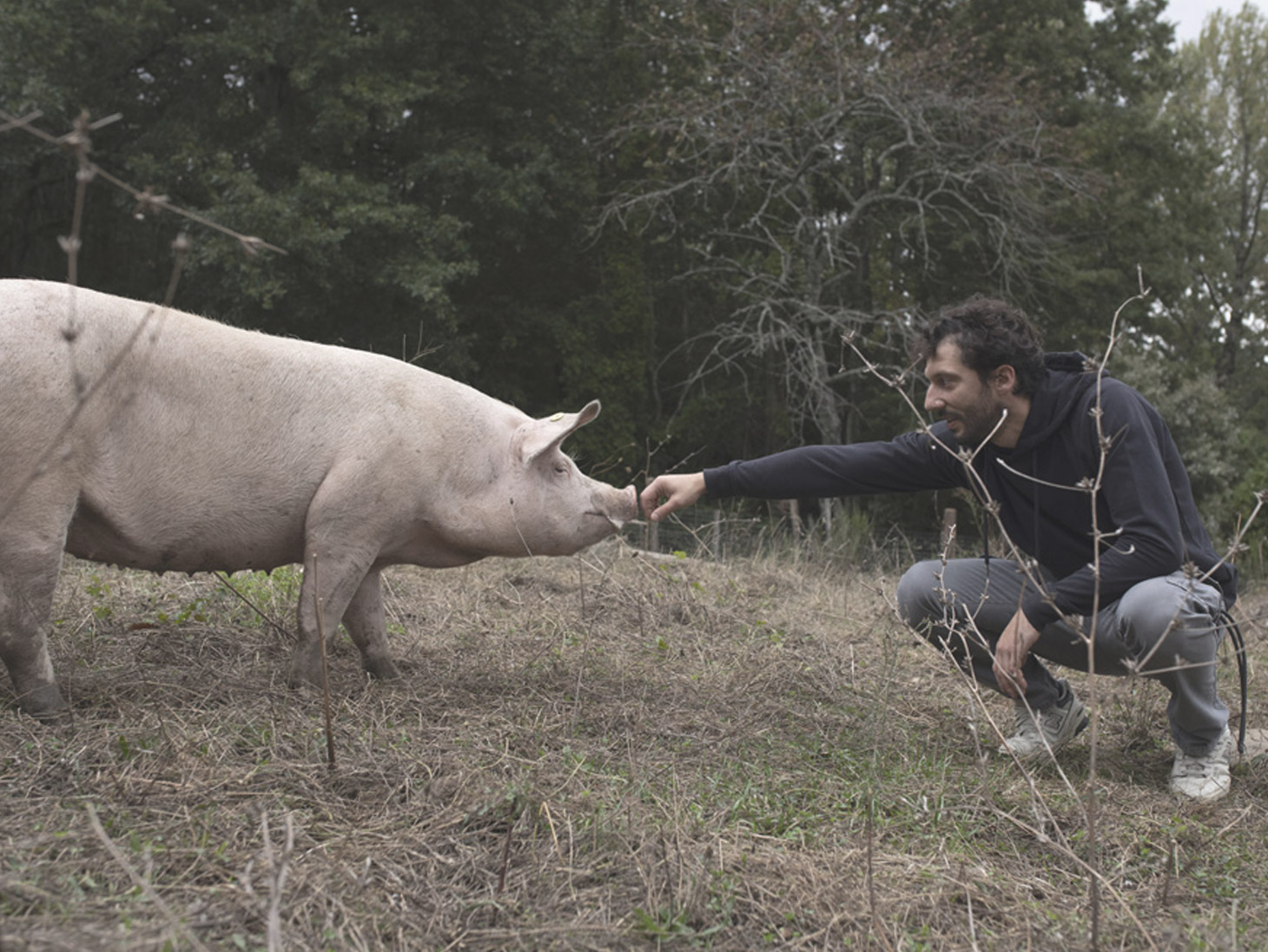
The legend tells that Matelda still roams the castle. Moreover, on full moon nights, the sounds of weapons clashing can be heard in the courtyard, where plenty of bloody duels have taken place. It might just be suggestion, but the night is not very restful, accompanied by strange creaks... At last morning arrives and, as always, the light reveals a completely different landscape: we are in the Casentino area, a valley surrounded by ancient forests, in the province of Arezzo, in the eastern part of Tuscany, bordering Emilia Romagna. The foliage makes the landscape even more charming. We say goodbye to Matelda and descend to Porena di Poppi to meet David Orlandi, by Le Selve di Vallolmo." We decide to head straight "up to the Selve", in Vallolmo: the weather is threatening, and we've asked David if we could take some photos of the farm right away before it starts raining.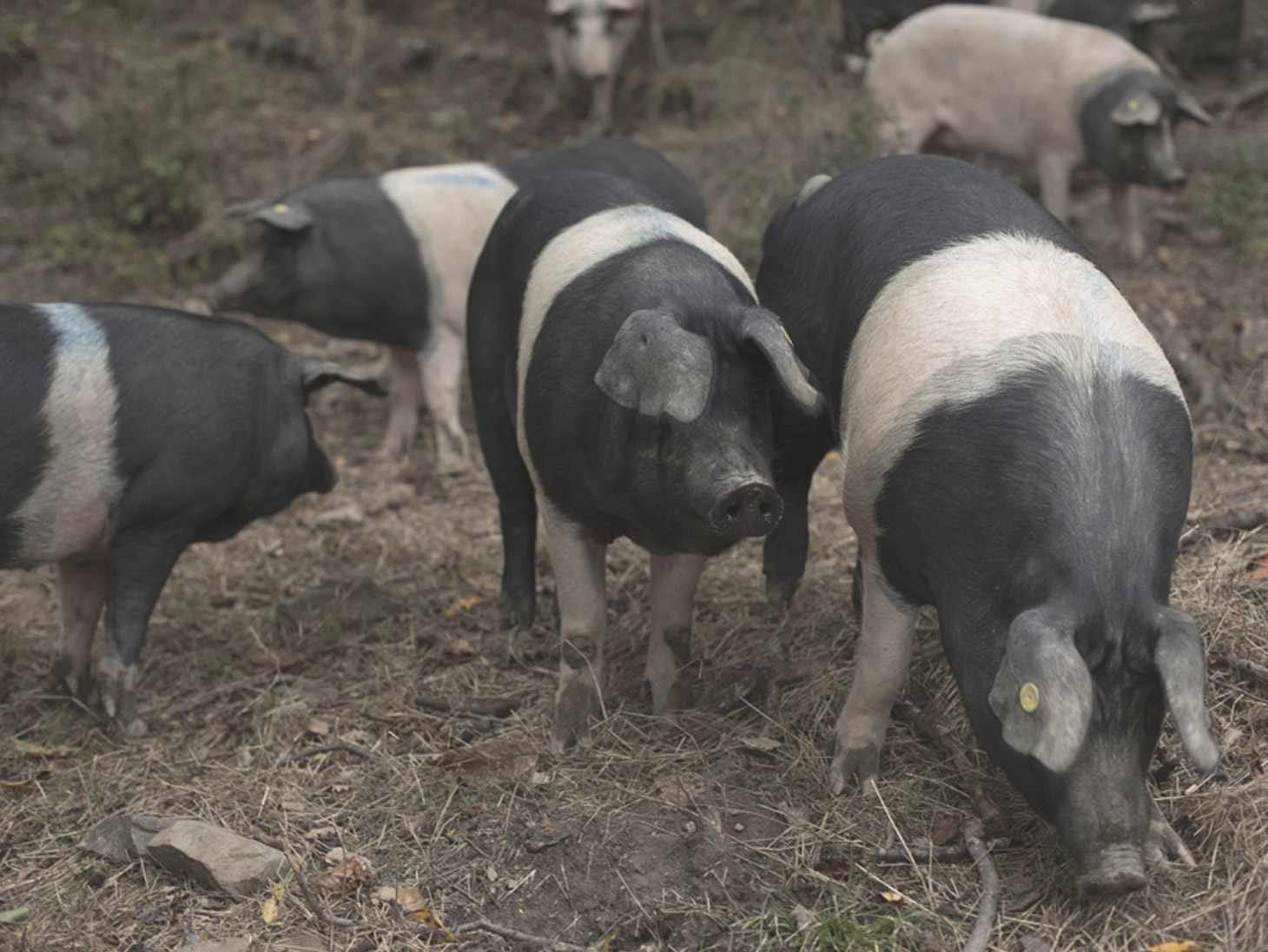
David and his family manage the entire supply chain, starting from the breeding: one in the stable in Poppi (AR), where they keep the Large White breed pigs - the Whites, as David calls them - and one in the wild in Vallolmo, at an altitude of 820 meters, inside the Casentino Forests National Park, where the Cinta Senese and Grigio del Casentino pigs are free bred.
Grigio del Casentino is not a native breed like Cinta Senese but a crossbreed: the mother always has to be a Large White, and the father always a Cinta Senese (or Mora Romagnola). They can be entirely grey or pink with grey spots. If you cross non-pure breeds, within 3-4 generations the genetically stronger breed - Large White - prevails, David explains." Wild mint, rosemary, thyme: these are the scents that greet us, overpowering, as soon as we step out of the car. The view over the valley is breathtaking, the stone farmhouse really enchanting. We walk among the trees along the path that leads to the farm gate.
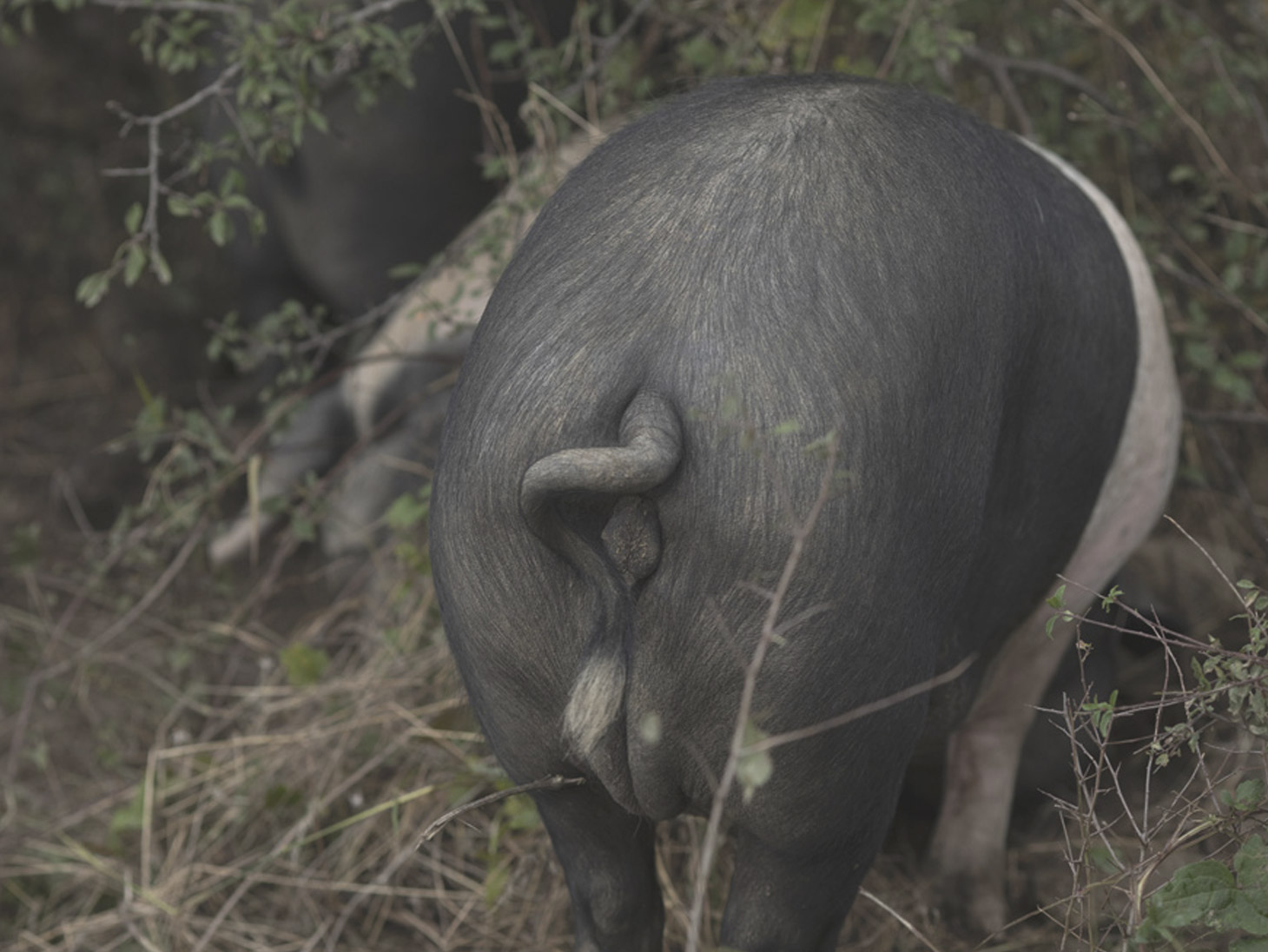
"After 6 months we are finally repopulating the free-range farm: African swine fever is crippling many breeders; so far, we've been lucky, but the local health authorities have mandated us to install a double fence to prevent contact with wild boars and prevent the spread of the disease. A few months ago, we moved all the pigs to the stable in Poppi, and during the summer, my brother and I installed the fence and even a double gate. Now it feels like entering Jurassic Park, with all the protections" - David jokes, but we know the investment was significant, and the installation work was far from trivial, covering an area of 15 hectares. "At full capacity, the farm in Vallolmo can accommodate up to 150-180 pigs; for now, we have brought back around thirty, awaiting the final clearance from the veterinarians.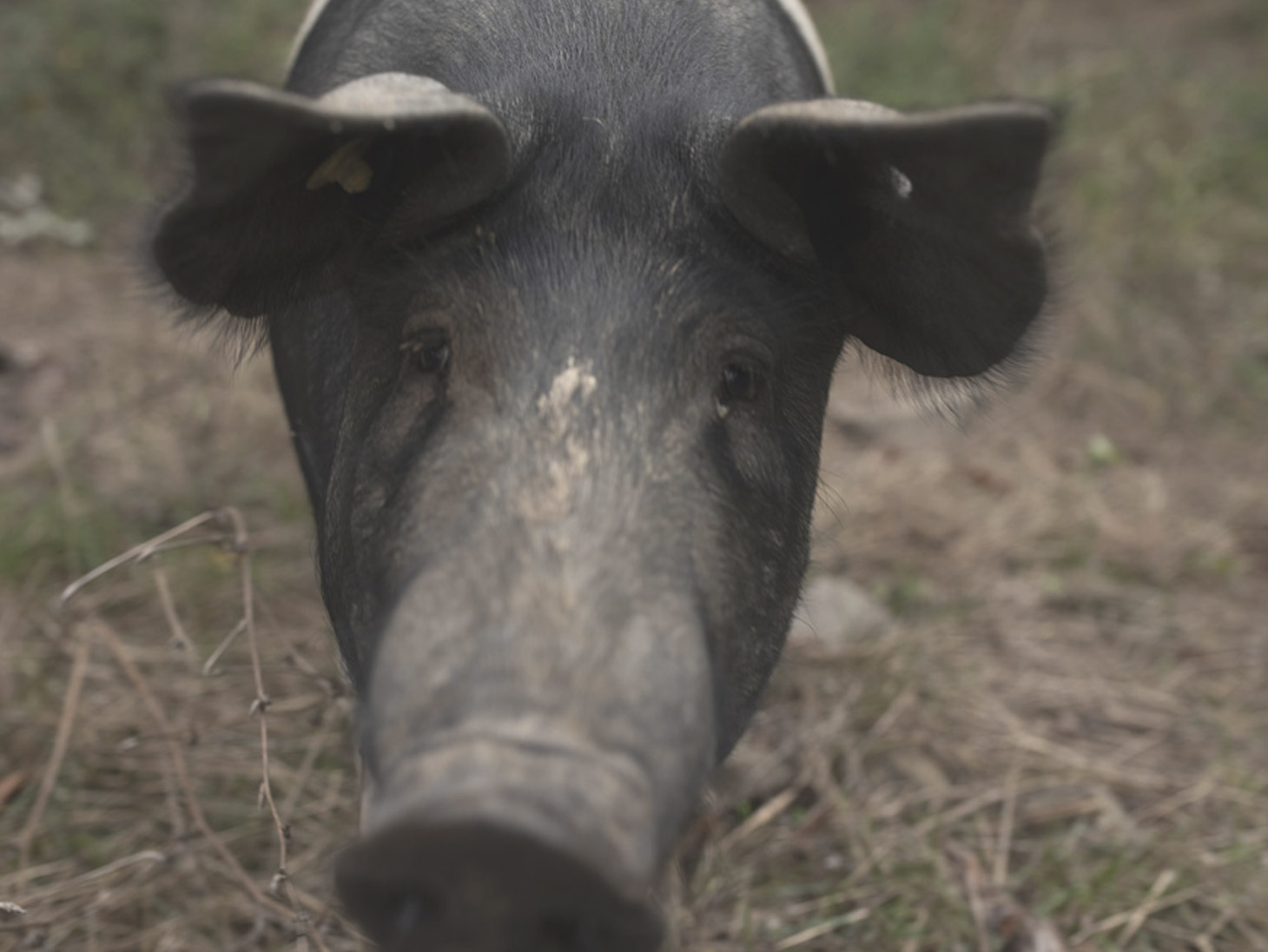
The grazing area is rotated among three enclosures, where the pigs are also separated by age. In total, the farm manages 600-700 animals of three breeds: the Whites always stay in the stable in Poppi, while the Greys and the Cintas are born in the stable but transferred to the Selve from the fourth month of age." The farm was founded in the '80s by Claudio Orlandi, David's father, initially as a Large White pig breeding for the Parma circuit: at that time, they used to breed around 40,000 pigs. In 2003, Claudio decided to sell almost all the stables, keeping only the Casentino farm, to embrace a new journey and add more value to the breeder's job.
That's when he started the free-range breeding of Grigio del Casentino, along with the processing of the raw materials. In the beginning, all the production was in Vallolmo: only 3 pigs were slaughtered per week, and the meats were processed in the laboratory, located in the same stone farmhouse where the family also handled the aging and a little company shop." Today, the fresh meat processing is done in the town, in Poppi, by Matteo, David's brother: he is the family butcher.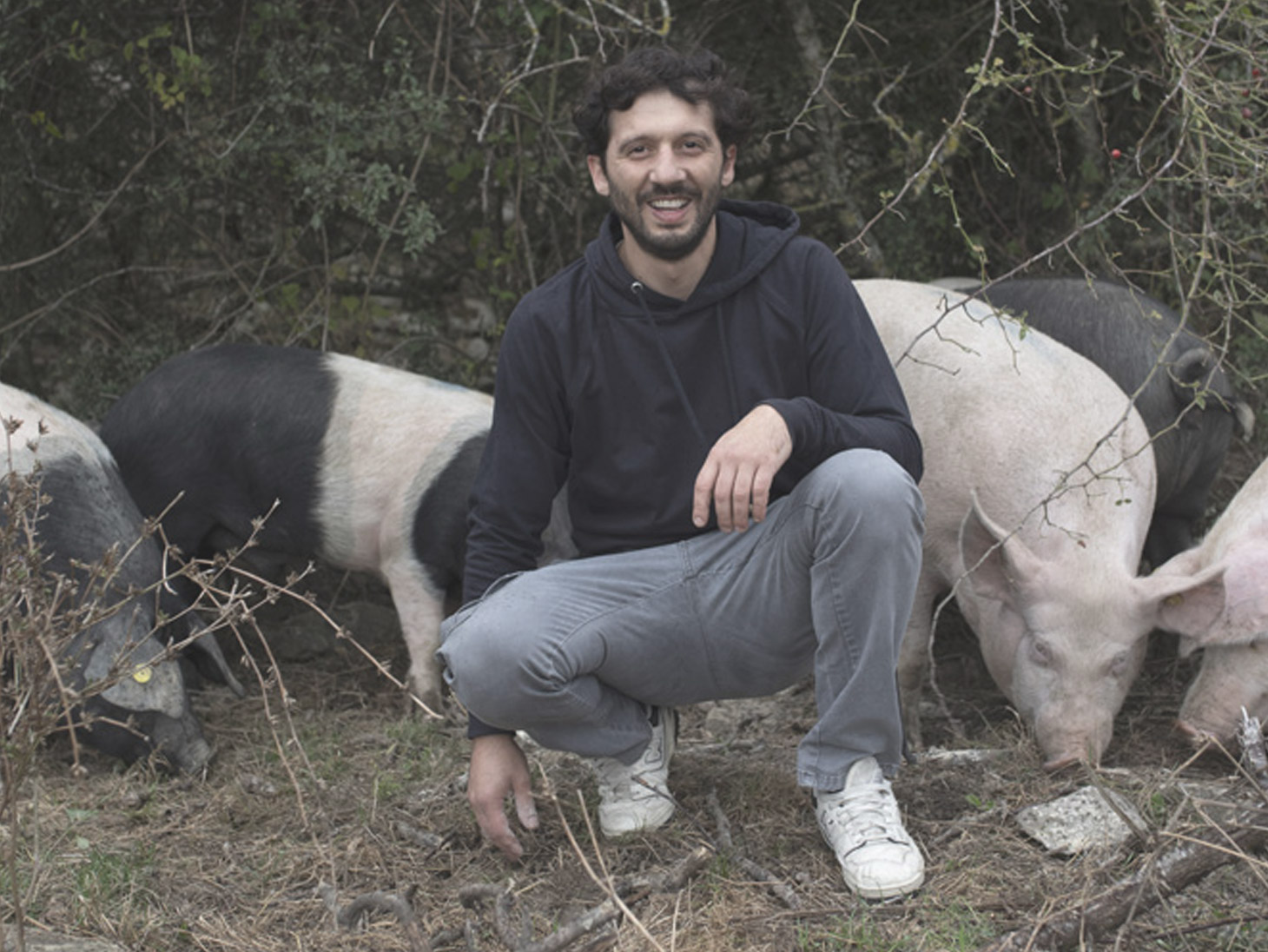
In Poppi, next to the laboratory, has been relocated also the company shop, managed by mom Michela. Dad Claudio looks after the feed mill, the breeding, and the fattening of the Large White pigs, still in Poppi, while David takes care of the free-range breeding and the aging of hams, which remain in Vallolmo. David's sister, Serena, handles the administration. "Currently we slaughter about 15 animals per week, usually 10 Grey and Cinta pigs and 5 White ones. The processing follows a weekly cycle: we 'break down' the carcasses on Saturdays and by the following Friday all cuts must be managed to accommodate new arrivals". As we walk among the oaks and chestnut trees, the pigs approach us curiously.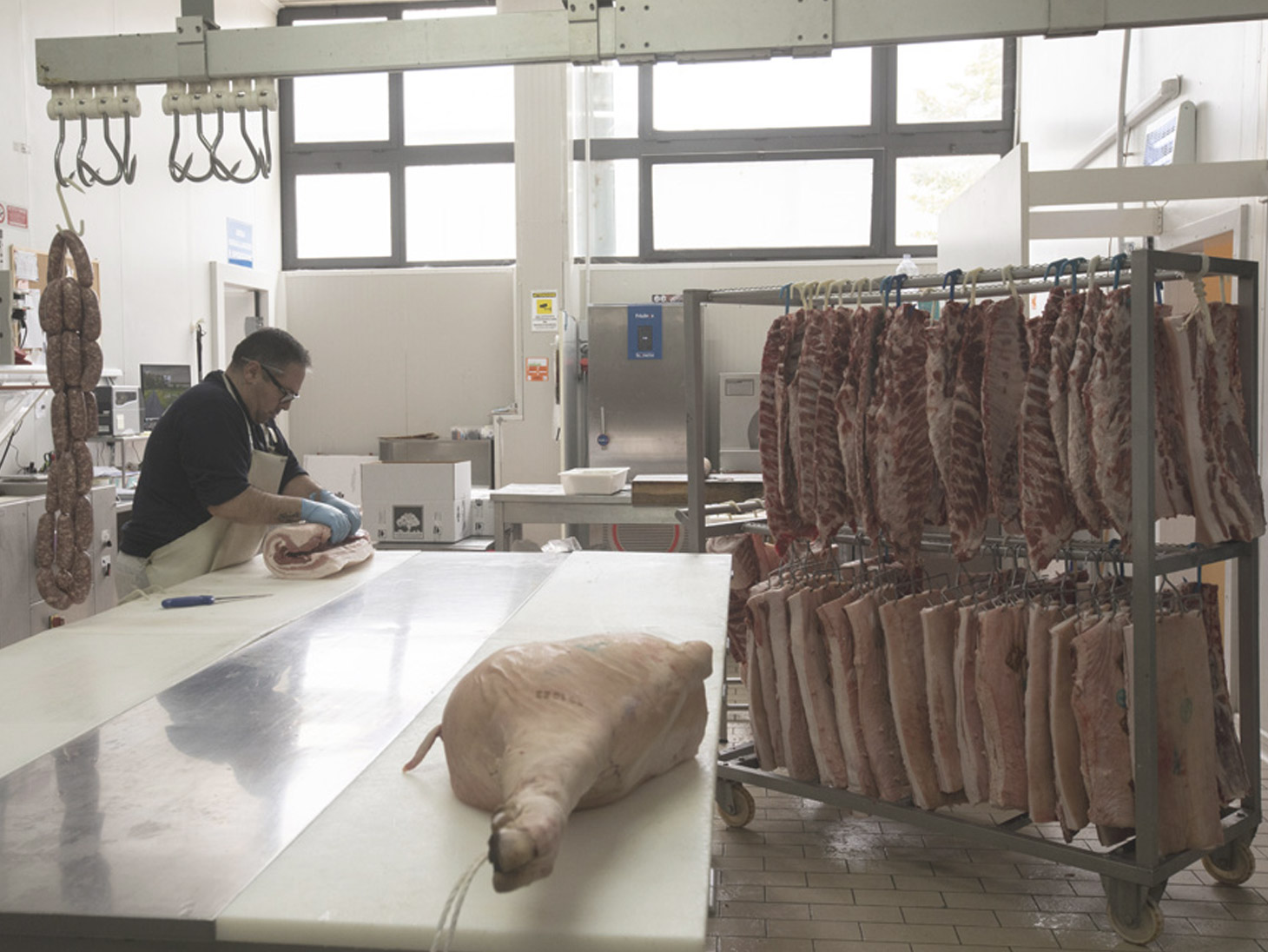
At first, they observe us for a while, but once they realize we're not a threat, they start sniffing us like little dogs. Who wouldn't desire a nice lick from a Grigio del Casentino! It's amusing to see how they let themselves be coddled by David; they truly seem like pets." We enter the stable, prepared to be overwhelmed by the pungent smell that characterizes pig farms. Instead, we are pleasantly surprised: the stable is spotless, resembling more of a tool shed than a pig shelter.
"It's cleaned once a week - David explains - but if the animal has the freedom to move, where it eats and sleeps it tends not to soil!" Here, the pigs can enter and exit independently through a flip door and always have access to water and the ground feed that supplements their diet: grains of barley, corn, and broad beans (no soy), mostly grown in nearby fields and ground in the family mill. Usually, the grain dispenser is refilled every day, but in the autumn season the same amount of feed lasts for two days because the pigs have plenty of acorns and chestnuts in the forest, as well as tubers, roots, and mushrooms, which they are quite fond of.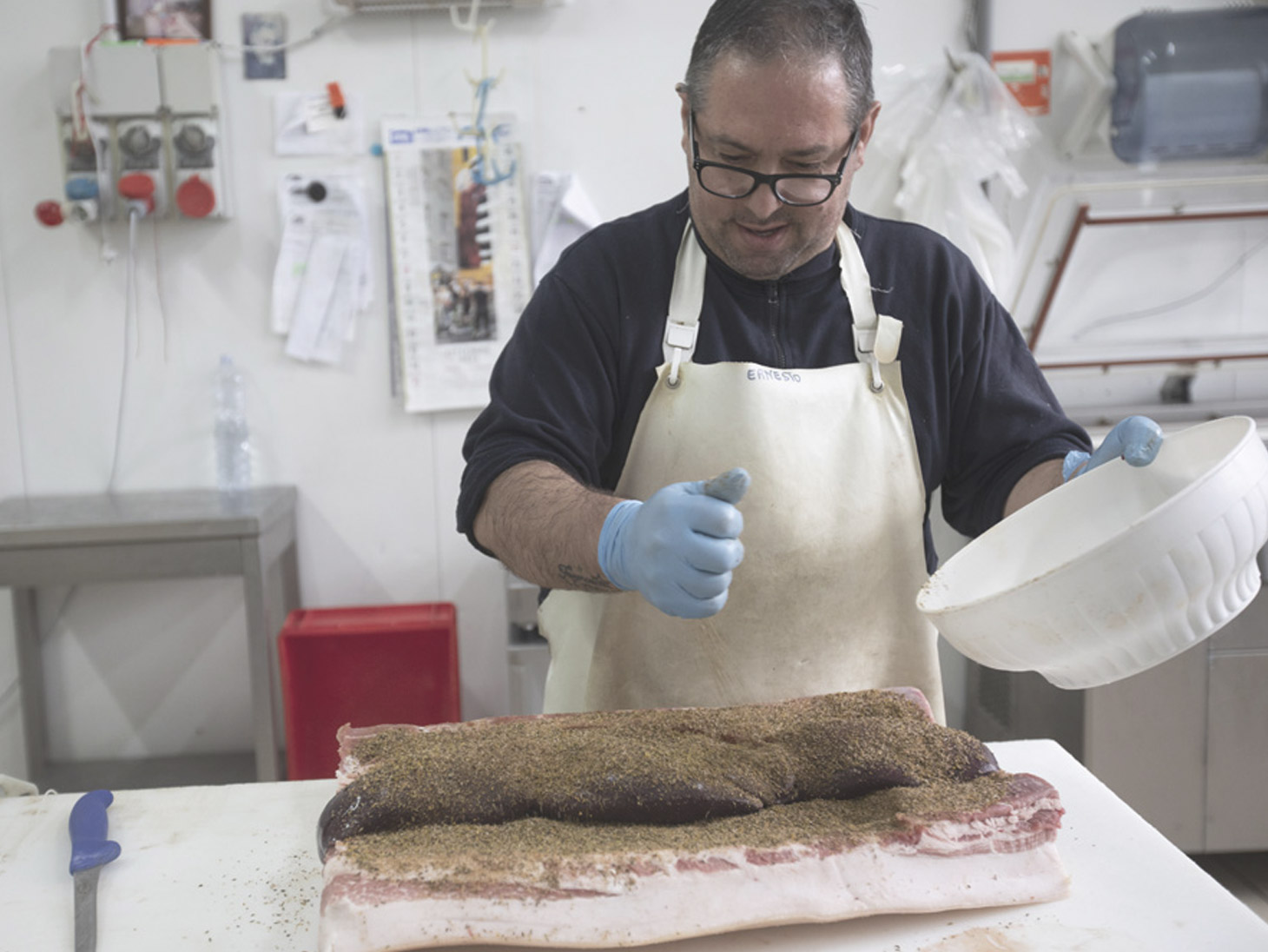
The Prosciutto del Casentino, Slow Food Presidium, can be exclusively produced according to the regulations from October 1st to March 31st. The thighs are salted for about three weeks, during which they are massaged with garlic, spices, and covered with salt. Once removed from the salt, they undergo a drying process for 60-80 days: the first week at 26°C, then the temperature is gradually lowered to 14-12°C.
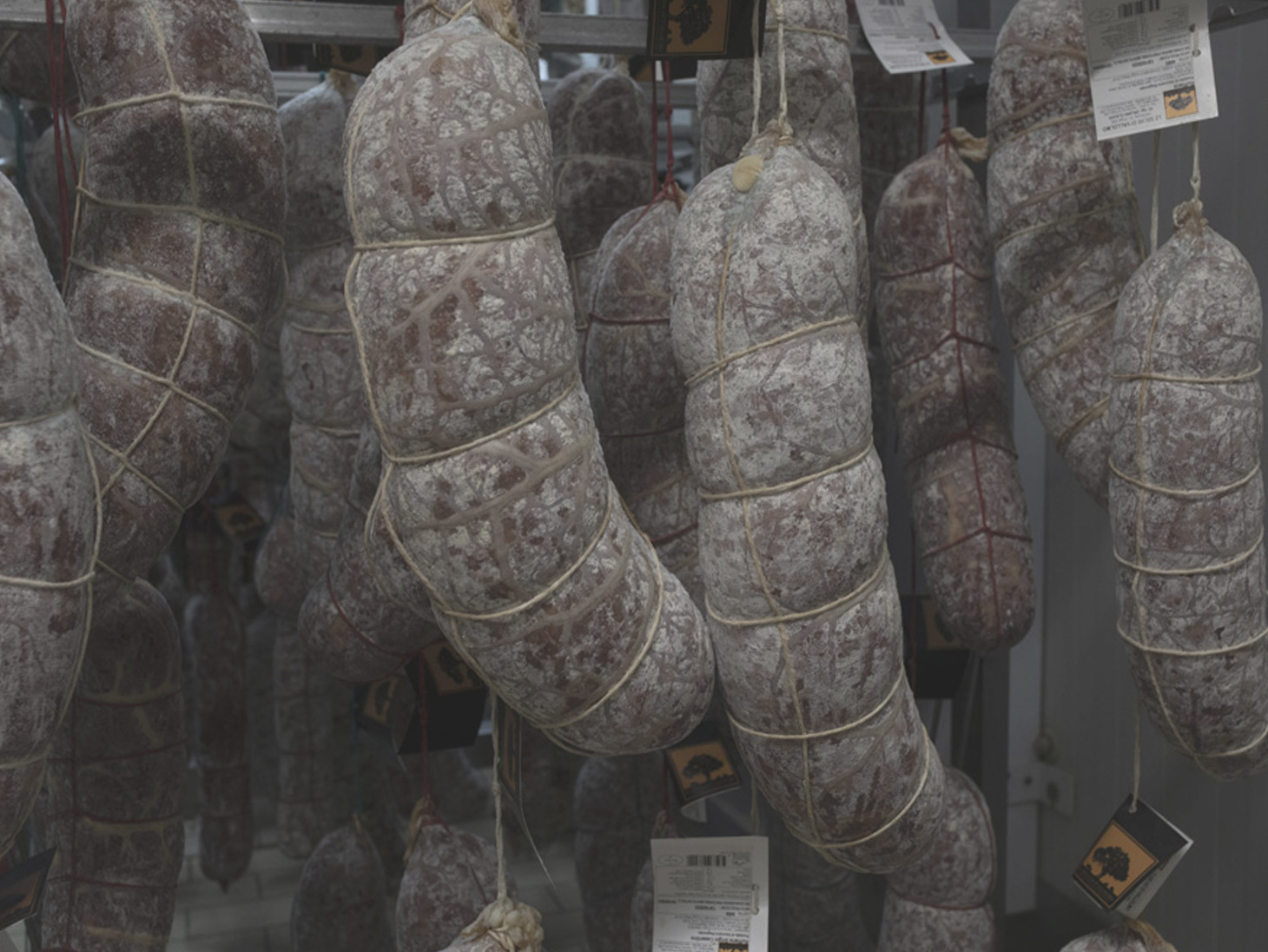
At the end of this phase the hams are washed, dried, and after the "sugnatura" process (they are covered with fat), they are placed in the aging cellar, still in Poppi. After 1 or 2 months they are finally transferred to Vallolmo, in a partially underground stone cellar with natural air circulation, where only the hams are aged. They will remain there until they reach two years of age. All products obtained from the Grigio del Casentino breed are fire branded by the Consorzio Prosciutto del Casentino: the ham when it reaches 18 months of aging, and other anatomical cuts at the butchering stage.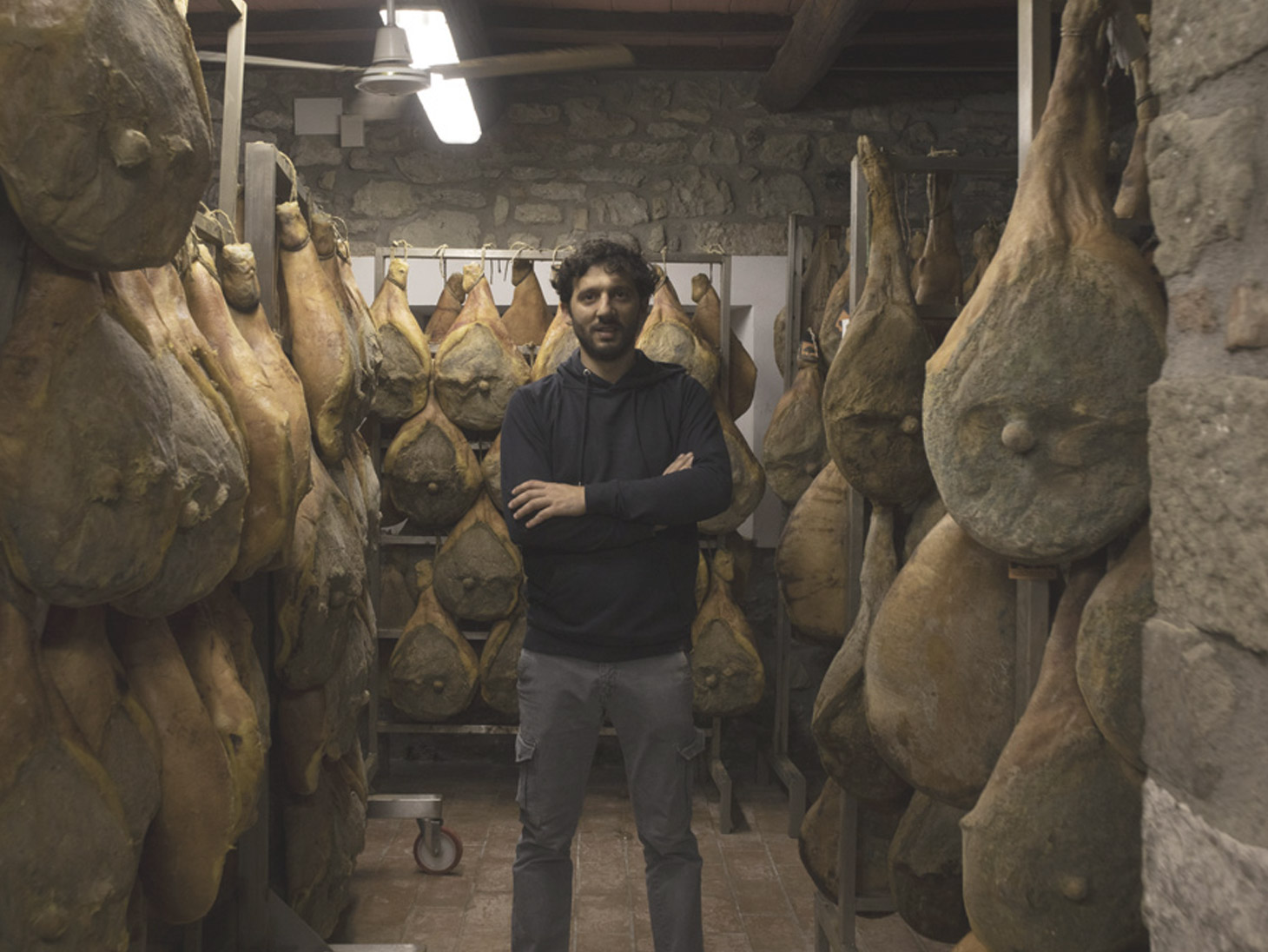
The supply chain is also certified by the provincial breeders' association of Arezzo, with a tattoo at birth. We ask David if the breed can be recognized from the anatomical cuts: David shows us the cart with the pancettas, where the difference in thickness between the White (thinner) and the Grey and Cinta (larger) is immediately noticeable. The contrast is equally evident in the cuts of fresh meat: unlike the White, which has light-colored flesh, the loin of Cinta and Grey is much more marbled and much "bloodier".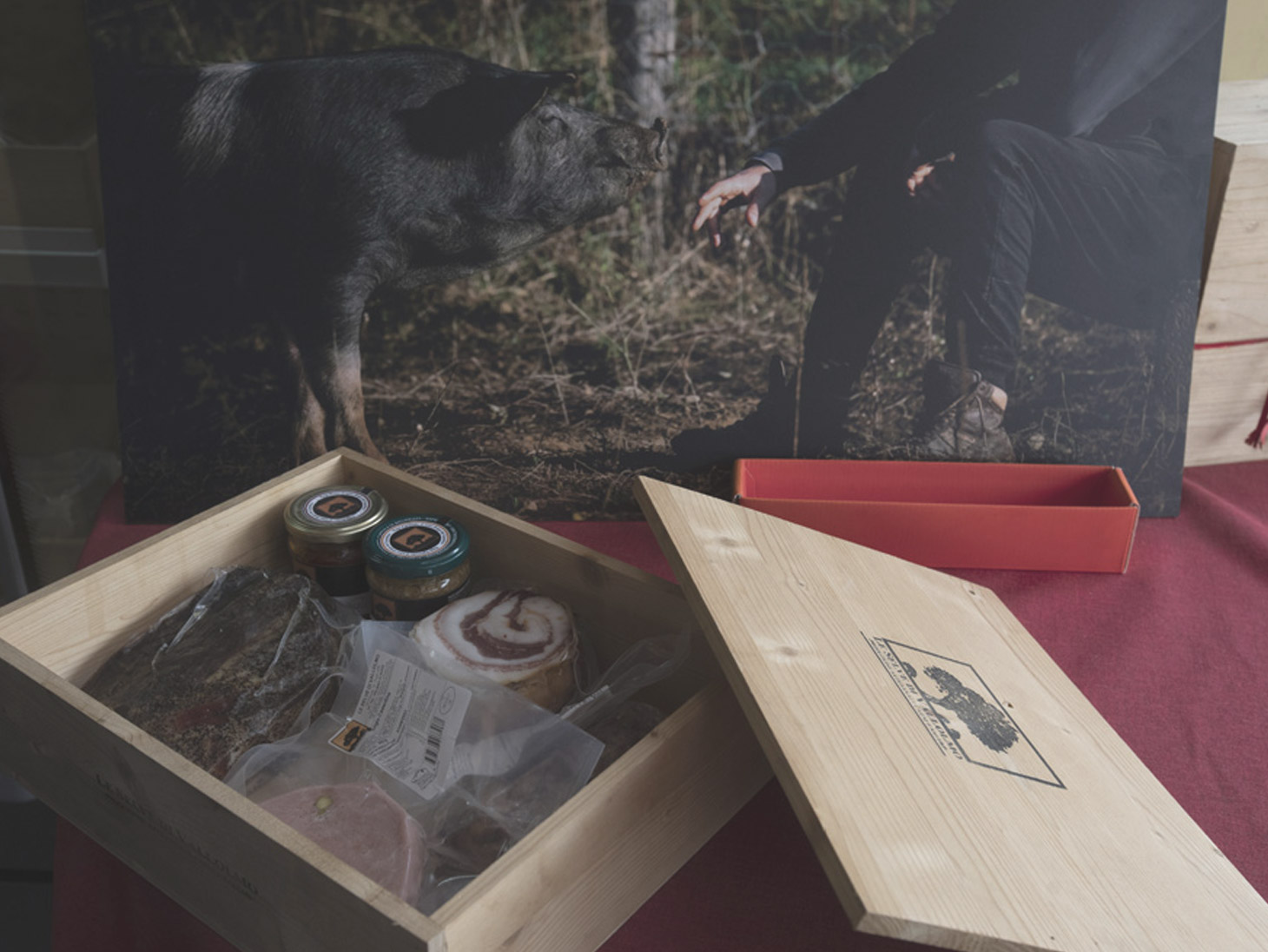
Thanks to its deep red hue, the loin and neck can be easily mistaken – as sometimes happens with Iberico – for cuts of beef!" Entering the lab, we are greeted by the aroma of spices used in the seasoning, primarily pepper. The impeccable order, even inside the aging chambers, already gives us an idea of the care in managing the products. David let us smell the difference in aroma between wild fennel seeds and flowers: the latter much more refined, not at all overpowering. The same delicacy we find in the taste of Ruffiana. Of course, we couldn't conclude the visit without a tasting session!




